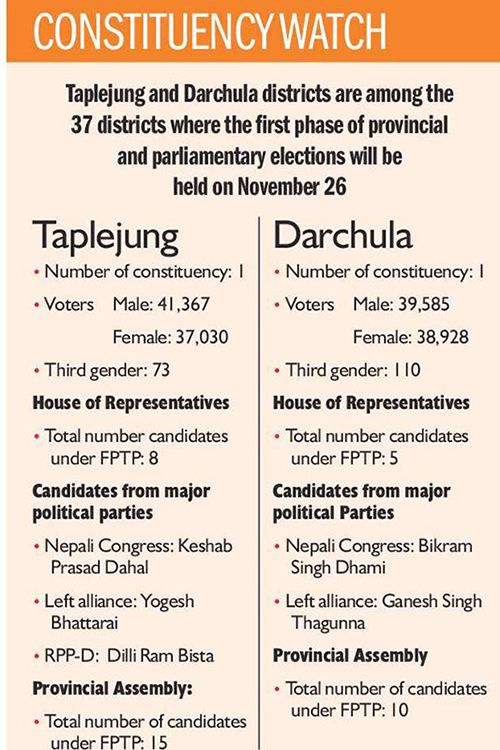How the FPTP and PR systems work
1. If a political party wins only one seat, candidate of which system should be selected?
If a political party wins a single seat in the parliamentary PR election, the party is free to select candidate from any of the six inclusive groups. But in the provincial elections, the party has to select Adivasi/Janajati in Province 1, Madhesi in Province 2, Adivasi/Janajati in Province 3, and Khas/Arya in provinces 4, 5, 6 and 7.
2. Which one — male or female — should be selected if a party wins one seat under the PR system?
If no woman candidate from a particular party is elected in the first-past-the-post elections or less than one-third women candidates are elected in the elections, and that party wins only one seat in the PR election, that party has to compulsorily give the seat to a woman candidate.
If a political party wins a total of five seats — four seats under the FTPT and one seat under the PR system -- in the elections and out of them only one woman candidate has won in the FTPT category, the party concerned will have to nominate a woman in the PR seat to maintain 33 per cent representation of women. The political party is obliged to have at least two women out of five seats won under both the systems.
However, constitutional provision to ensure 33 percent women’s representation in the parliament will still not be fulfilled.
3. Is a party required to select only male or female candidates from the closed list?
The political party may select only female or male candidates. For example: If a political party wins 26 seats under the FTPT and 13 seats under the PR, and if any woman candidate could not win the elections under FTPT system, the party will be obliged to select 13 candidates from among women under the PR system to maintain 33 per cent representation of women. But if 13 or more women win elections under the FTPT system, the party may select all male candidates from the PR list.
4. What is the condition of representation of disabled people?
A political party should include at least one candidate from among persons with disabilities during nomination of candidates in the closed list. The persons with disabilities so nominated in the closed list must have their identity card issued by the government.
5. What happens if one-third representation is not possible despite nominating candidates from among women only in the closed list?
It is a special circumstance and will not hamper the spirit of one-third representation.
6. What happens if a particular political party fails to get three per cent votes in the parliamentary PR elections and 1.5 per cent in the provincial PR elections?
In that situation, the party will not be included in the seat sharing process. This means that party will not win
any seat.
7. If a political party fails to get three per cent votes in the parliamentary PR elections and 1.5 per cent in the provincial PR elections. What happens with the votes that the party has garnered?
The votes the party has garnered will not be counted in the seat sharing process. Those votes will be registered in the EC’s record as static.






